Changes in concentrations of cervicovaginal immune mediators across the menstrual cycle: a systematic review and meta-analysis of individual patient data
- PMID: 36195867
- PMCID: PMC9533580
- DOI: 10.1186/s12916-022-02532-9
Changes in concentrations of cervicovaginal immune mediators across the menstrual cycle: a systematic review and meta-analysis of individual patient data
Abstract
Background: Hormonal changes during the menstrual cycle play a key role in shaping immunity in the cervicovaginal tract. Cervicovaginal fluid contains cytokines, chemokines, immunoglobulins, and other immune mediators. Many studies have shown that the concentrations of these immune mediators change throughout the menstrual cycle, but the studies have often shown inconsistent results. Our understanding of immunological correlates of the menstrual cycle remains limited and could be improved by meta-analysis of the available evidence.
Methods: We performed a systematic review and meta-analysis of cervicovaginal immune mediator concentrations throughout the menstrual cycle using individual participant data. Study eligibility included strict definitions of the cycle phase (by progesterone or days since the last menstrual period) and no use of hormonal contraception or intrauterine devices. We performed random-effects meta-analyses using inverse-variance pooling to estimate concentration differences between the follicular and luteal phases. In addition, we performed a new laboratory study, measuring select immune mediators in cervicovaginal lavage samples.
Results: We screened 1570 abstracts and identified 71 eligible studies. We analyzed data from 31 studies, encompassing 39,589 concentration measurements of 77 immune mediators made on 2112 samples from 871 participants. Meta-analyses were performed on 53 immune mediators. Antibodies, CC-type chemokines, MMPs, IL-6, IL-16, IL-1RA, G-CSF, GNLY, and ICAM1 were lower in the luteal phase than the follicular phase. Only IL-1α, HBD-2, and HBD-3 were elevated in the luteal phase. There was minimal change between the phases for CXCL8, 9, and 10, interferons, TNF, SLPI, elafin, lysozyme, lactoferrin, and interleukins 1β, 2, 10, 12, 13, and 17A. The GRADE strength of evidence was moderate to high for all immune mediators listed here.
Conclusions: Despite the variability of cervicovaginal immune mediator measurements, our meta-analyses show clear and consistent changes during the menstrual cycle. Many immune mediators were lower in the luteal phase, including chemokines, antibodies, matrix metalloproteinases, and several interleukins. Only interleukin-1α and beta-defensins were higher in the luteal phase. These cyclical differences may have consequences for immunity, susceptibility to infection, and fertility. Our study emphasizes the need to control for the effect of the menstrual cycle on immune mediators in future studies.
Keywords: Cervix; Chemokine; Cytokine; Female genital tract; Menstrual cycle; Meta-analysis; Systematic review; vagina.
© 2022. The Author(s).
Conflict of interest statement
EML’s contributions to this study occurred while affiliated with the University of Washington. At the time of submission, EML was an employee of AbbVie, Inc and holds stock or stock grants. The other authors declare that they have no competing interests.
Figures

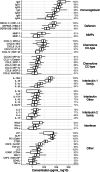
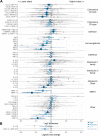
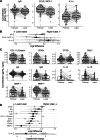
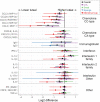
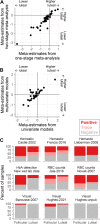

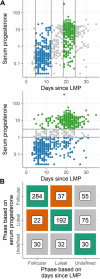
References
-
- Henning TR, Butler K, Hanson D, Sturdevant G, Ellis S, Sweeney EM, et al. Increased susceptibility to vaginal simian/human immunodeficiency virus transmission in pig-tailed macaques coinfected with Chlamydia trachomatis and Trichomonas vaginalis. J Infect Dis. 2014;210(8):1239–1247. doi: 10.1093/infdis/jiu240. - DOI - PMC - PubMed
-
- Vishwanathan SA, Guenthner PC, Lin CY, Dobard C, Sharma S, Adams DR, et al. High susceptibility to repeated, low-dose, vaginal SHIV exposure late in the luteal phase of the menstrual cycle of pigtail macaques. J Acquired Immune Def Syndr (1999) 2011;57(4):261–264. doi: 10.1097/QAI.0b013e318220ebd3. - DOI - PubMed
Publication types
MeSH terms
Substances
Grants and funding
LinkOut - more resources
Full Text Sources
Research Materials
Miscellaneous

